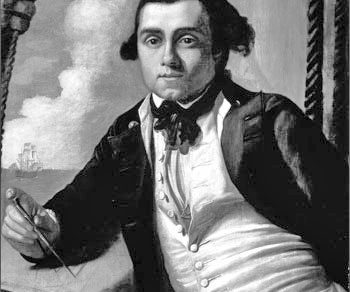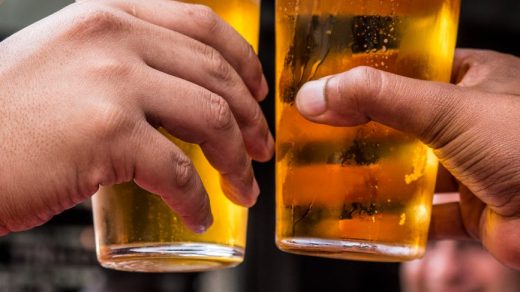Kirkcaldy (/kɜːrˈkɔːdi/ (listen) kur-KAW-dee; Scots: Kirkcaldy; Scottish Gaelic: Cair Chaladain) is a town and former royal burgh in Fife, on the east coast of Scotland. It is about 11.6 miles (19 km) north of Edinburgh and 27.6 miles (44 km) south-southwest of Dundee. The town had a recorded population of 49,460 in 2011, making it Fife’s second-largest settlement and the 12th most populous settlement in Scotland.

Kirkcaldy has long been nicknamed the Lang Toun (pronunciation; Scots for “long town”) in reference to the early town’s 0.9-mile (1.4 km) main street, as indicated on maps from the 16th and 17th centuries. The street would finally reach a length of nearly 4 miles (6.4 km), connecting the burgh to the neighbouring settlements of Linktown, Pathhead, Sinclairtown and Gallatown, which became part of the town in 1876. The formerly separate burgh of Dysart was also later absorbed into Kirkcaldy in 1930 under an act of Parliament.
The area around Kirkcaldy has been inhabited since the Bronze Age. The first document to refer to the town is from 1075, when Malcolm III granted the settlement to the church of Dunfermline. David I later gave the burgh to Dunfermline Abbey, which had succeeded the church: a status which was officially recognised by Robert I in 1327. The town only gained its independence from Abbey rule when it was created a royal burgh by Charles I in 1644.
From the early 16th century, the establishment of a harbour at the East Burn confirmed the town’s early role as an important trading port. The town also began to develop around the salt, coal mining and nail making industries. The production of linen which followed in 1672 was later instrumental in the introduction of floorcloth in 1847 by linen manufacturer, Michael Nairn. In 1877 this, in turn, contributed to linoleum, which became the town’s most successful industry: Kirkcaldy was a world producer until well into the mid-1960s. The town expanded considerably in the 1950s and 1960s, though the decline of the linoleum industry and other manufacturing restricted its growth thereafter.
Today, the town is a major service centre for the central Fife area. Public facilities include a main leisure centre, theatre, museum and art gallery, three public parks and an ice rink. Kirkcaldy is also known as the birthplace of social philosopher and economist Adam Smith who wrote his magnum opus The Wealth of Nations in the town. In the early 21st century, employment is dominated by the service sector: the biggest employer in the town is PayWizard, formerly known as MGT plc (call centre). Other main employers include NHS Fife, Forbo (linoleum and vinyl floor coverings), Fife College, Whitworths (flour millers) and Smith Anderson (paper making).
The name Kirkcaldy means “place of the hard fort” or “place of Caled’s fort”. It is derived from the Pictish *caer meaning “fort”, *caled, which is Pictish “hard” or a personal name, and -in, a suffix meaning “place of”. Caled may describe the fort itself or be an epithet for a local “hard” ruler. An interpretation of the last element as din (again meaning “fort”) rather than -in is incorrect. The Old Statistical Account gives a derivation from culdee, which has been repeated in later publications, but this is also incorrect.
Early
The discovery of 11 Bronze Age cist burials which date from 2500 BC and 500 BC suggests that this is the most ancient funerary site in the area. What probably made this location ideal was its natural terraces stretching away from the sand bay, and the close proximity of the East Burn to the north and the West (Tiel) Burn to the south. Four Bronze Age burials dating from around 4000 BC have also been found around the site of the unmarked Bogely or Dysart Standing Stone to the east of the present A92 road. Although there are few Roman sites in Fife, a Roman camp was known to exist at Carberry Farm on the town’s outskirts.
The Battle of Raith in AD 596 was once believed to have taken place to the west of the town’s site but the theory no longer holds support. The battle was said to have been fought between the Angles and an alliance, led by King Áedán mac Gabráin of Dál Riata, of Scots, Picts and Britons.
Medieval
Ravenscraig Castle was begun in 1460.

The first document to recognise the town was issued in 1075, when the King of Scots, Malcolm III (reigned 1058–93) granted the shire of Kirkcaladunt, among other gifts, to the church at Dunfermline. The residents were expected to pay dues and taxes for the church’s general upkeep. Two charters, later confirmed by Malcolm’s son David I in 1128 and 1130, refer to Kircalethin and Kirkcaladunit respectively but do not indicate their locations.
In 1304, a weekly market and annual fair for Kirkcaldy was proposed by the Abbot of Dunfermline to King Edward I, during a period of English rule in Scotland from 1296 to 1306.During these discussions, the town may have been referred to as “one of the most ancient of burghs”. This status as a burgh dependent on Dunfermline Abbey was later confirmed in 1327 by Robert I, King of Scots.
A charter granted in 1363 by David II, King of Scots (reigned 1329–71), awarded the burgh the right to trade across the regality of Dunfermline. This charter allowed the burgesses of Kirkcaldy to purchase and sell goods to the burgesses of the three other regality burghs — Queensferry, Dunfermline and Musselburgh — that belonged to the Abbey. By 1451, Kirkcaldy was awarded feu-ferme status. Under the status, responsibility would now lie with the bailies and council to deal with the routine administration of the town and its fiscal policies; conditional on an annual payment of two and a half marks (33s 4d) to the Abbot of Dunfermline.
16th to 18th centuries
At the beginning of the 16th century, the town became an important trading port. The town took advantage of its east coast location, which facilitated trading contacts with the Low Countries, the Baltic region, England, and Northern France. The feu-ferme charter of 1451 between the Abbot of Dunfermline and the burgesses of Kirkcaldy mentioned a small but functioning harbour; it is not known when this harbour was established, or whether it was always located at the mouth of the East Burn.[5][9][12] According to treasurers’ accounts of the early 16th century, timber imported via the harbour—possibly from the Baltic countries—was used at Falkland Palace and Edinburgh Castle, as well as in shipbuilding. Raw materials such as hides, wool, skins, herring, salmon, coal and salt were exported from the town until well into the 17th century.
A charter issued by Charles I granting royal burgh status in 1644 resulted in the end of the Abbey’s jurisdiction over the town. As a gesture, the king bequeathed 8.12 acres (3.29 ha) of common muir suitable for “bleaching of linen, drying of clothes, recreation and perpetuity”. In 1638, under the reign of Charles I, the town subscribed to the National Covenant, which opposed the introduction of episcopacy and patronage in the Presbyterian church. Support for the Covenanting cause cost the town over 250 men at the Battle of Kilsyth in 1645. The continuing civil wars killed at least another 480 men and led to the loss of many of the harbour’s trading vessels. By 1660, this left the town with only twelve registered ships, down from 100 it is claimed were recorded between 1640 and 1644.
Towards the end of the 17th century, the economy recovered, with growth in manufacturing. During this period, Daniel Defoe described Kirkcaldy as a “larger, more populous, and better-built town than … any on this coast”. A shipbuilding revival produced 38 vessels between 1778 and 1793. In the mid-19th century, whaling became important to the town for a short time.[18] In 1813, the first Kirkcaldy whaling ship, The Earl Percy, sailed north to the Davis Strait; the town’s last whaler, The Brilliant, was sold in 1866 to Peterhead, bringing an end to the industry. Construction of a new turnpike from Pettycur to Newport-on-Tay via Cupar in 1790, while improving only one section of Fife’s isolated road system, brought a huge increase in traffic along Kirkcaldy’s High Street, and helped to strengthen the town’s position.
Royal Burgh of Kirkcaldy, 1824
Modern.

For most of the 19th century, the main industries in the town were flax spinning and linen weaving. To cope with increasing imports of flax, timber and hemp, and exports of coal, salt and linen, between 1843 and 1846 a new wet dock and pier was built at the harbour. In 1847 a canvas manufacturer, Michael Nairn, took out a licence on Frederick Walton’s patent for the production of floorcloth and opened a factory in nearby Pathhead. When the patent expired in 1876, Nairn and other floorcloth manufacturers began the manufacture of linoleum. Production of both floorcloth and linoleum occupied seven factories in the town by 1883, employing 1,300. A further expansion of the harbour was completed between 1906 and 1908, for another increase in linoleum and coal.
The expansion of the town led in 1876 to the extension of the royal burgh’s boundaries. The town absorbed its neighbouring settlements of Linktown, in the parish of Abbotshall; Invertiel in the parish of Kinghorn; and Pathhead, Sinclairtown and Gallatown in the parish of Dysart. These formerly separate settlements had once been forbidden by the old guild rights to sell their goods in Kirkcaldy. In 1922–1923 a seawall and esplanade were constructed, funded by the Unemployment Grants Commission and built by unemployed residents. In 1930, the town would further expand to include the former royal burgh of Dysart under an act of Parliament when its own town council became bankrupt.
During the 1950s and 1960s, new housing estates were built northwest of the town. This was followed by the redevelopment of the town centre in the 1960s and 1970s, which destroyed much of the old high street. There was speculation that the town’s population could increase to around 55–60,000 by 1970. This did not happen: a decline in the linoleum industry in the mid-1960s led to a decrease in population, from a peak of 53,750 in 1961 to 47,962 in 1981.
In the 21st century, Kirkcaldy remains an important centre for the surrounding areas, with a Museum and Art Gallery, three public parks and shopping facilities. The town also hosts the annual Links Market, commonly known as Europe’s longest street fair. The production of linoleum continues, though on a greatly reduced scale, under Swiss ownership (Forbo Holding AG). Kirkcaldy Harbour, which closed in 1992, re-opened in October 2011 to cargo ships. A project between Carr’s Flour Mills, the parent of Hutchison’s, Forth Ports (owners of the harbour) and Transport Scotland, will allow Carr’s to bring in wheat via the harbour and remove a quarter of its lorries from the roads every year.



